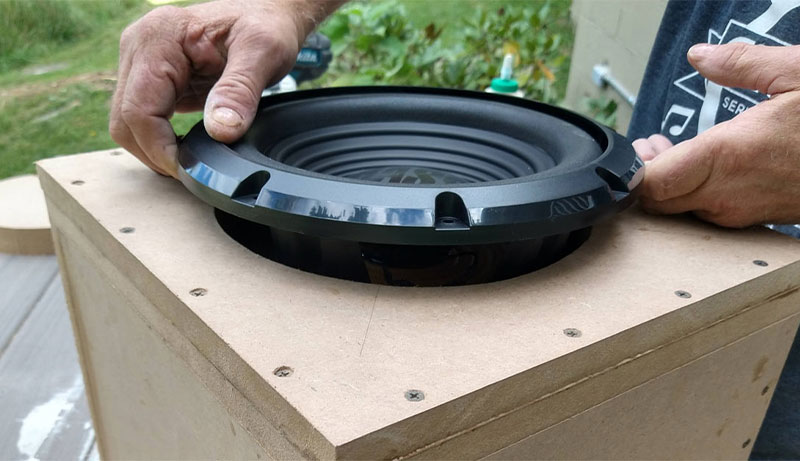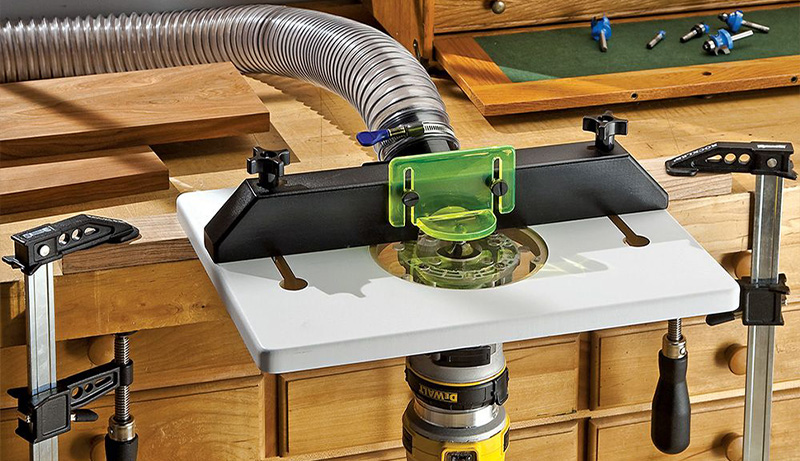Maintaining your subwoofers requires tuning a subwoofer box. To improve your bass’s performance, do this frequently. Your sound may be missing a certain component or frequency. You always strive to make your sound system better because you are an audiophile. Prior to tuning the subwoofer, you must choose the driver or loudspeaker that will be housed in the enclosure.
The following details will help you start tuning your subwoofer. Your ported subwoofer box may be tuned using one of two methods: mechanical tuning or mathematical tuning.
Why Is A Subwoofer Box Needed To Be Tuned?
By making changes to the enclosure or housing unit, you may control the subwoofer’s functionality and sound. For this reason, the port must have a specific width and length. The air in the enclosure behind your subwoofer enables for unfettered movement of the sub’s vibrations. These can come in a variety of sizes and forms if you added vents or are considering adding vents. Make sure your vents enable free passage of vibrations and that they don’t block the flow of sound.
You might wish to take the subwoofer box out of its shell before we start tweaking it. You will have easier mechanical modification access to the subwoofer as a result. You may leave the subwoofer in its box, connect it to your laptop or computer, and start the procedure that way if you’re intending to employ the mathematical method. For both techniques, you also need some tools.
What You’ll Need for Subwoofer Box Tuning
- speaker wire
- a working generator
- Screwdriver
- wire cutter
- Multimeter
Note: In this essay, we have covered many multimeters.
- Laptop
- Calculations require a pencil and a notepad (for the math approach)
- How To Tune A Subwoofer in Steps
Be mindful to take safety measures when tuning a subwoofer. You may be working with a strong electrical current, thus you must always be protected. Keep in mind that a bigger box will play lower and a smaller box will play higher. In light of that, let’s examine the tuning of a subwoofer box.
Discretionary The Sub
A technique called coupling aims to lessen undesired resonances by strengthening the connection between a speaker and the ground. The vibrations are not forced back into the enclosure when the speaker is a part of the floor. Due to the higher mass, the majority of the vibrations are lost on the floor. As we don’t want the speaker to be directly on the floor when we disconnect the sub, the vibrations must be enhanced rather than minimized.
Remark: Decoupling a subwoofer is not recommended on a hardwood floor.
If you have a hardwood floor or don’t want to make any changes to your enclosure, you may alternatively put down an isolation pad for the sub. Tennis balls may be sliced in half, with the ends placed on the corners of your sub. The rubberized cushioning improves your subwoofer’s low-frequency performance and helps to absorb some of the vibrations. Also, it will hasten the process of customizing to your preferences.
The Resonant Frequency Should Be Determined
- Connect your amplifier and subwoofer in series with the multimeter.
- Current will be measured using a multimeter.
- Attach the frequency generator’s amps inputs.
- The subwoofer will be driven by the frequency generator.
- A ported subwoofer will experience the lowest impedance possible.
- The impedance will peak when the subwoofer is enclosed in a sealed space.
- If the observed resonance frequency and the projected frequency don’t match, change the port’s length.
Resonant frequency should be adjusted.
You will set your subwoofer for the intended frequency resonance if it is not tuned to the expected frequency. You can alter your box to meet your needs, but for now, let’s look at how to decode the expected resonance mathematically. Use this formula:
- Fb: The enclosure’s intended tuning frequency, expressed in Hz.
- Lv: The port’s length in inches
- R: The vent tube’s radius
- Vb: The enclosure’s interior volume, expressed in cubic inches
- LV is equal to [(1.463 x 107 x R2)/(Fb2 x Vb)]. – 1.463 x R
How to Set a Subwoofer Box for 30 Hz

The typical resonance frequency of a subwoofer is between 28 and 34 Hz. The best level for your subwoofer would be tuned to 30Hz, however this depends on you and the subwoofer you have. If your subwoofer is housed in a ported box, the air that escapes the opening amplifies the frequency and can raise the hertz output. The current may be measured with a multimeter. To check the current, connect your subwoofer to your laptop. Next, analyze your anticipated current using the method above, then make changes to get your ideal current.
The subwoofer can play louder at frequencies of 45 Hz and higher, but the sound quality (SQ) won’t be as good. Less bass is created when the sound pressure level (SPL) is significantly lower. While a greater SPL produces more bass, the user won’t be able to hear the song. Discover the sweet spot for your subwoofer box between SQ and SPL. The two variables are inversely proportional; so, if you raise one, you also increase the other.
Different Subwoofer Box Types
There are three distinct subwoofer box types available. You’ll be able to tell how the air exits your subwoofer from this. Even if you previously purchased or constructed the box, the following can help you identify the various types:
Sealed
These containers are tightly closed. To produce accurate and defined bass, they are employed. There are no internal disturbances, and the air glides easily. Although the vibrations are continuous, they have a slightly closed-off sensation. Moreover, sealed boxes use a lot of energy.
Ported
This box features a port, which is a passageway allowing vibrations to travel through the box and out the other side. The fact that this technique may generate a lower frequency and deeper vibration makes it significantly different from a sealed subwoofer box. Your subwoofer’s modifications and tuning are enhanced via the port. The ported subwoofer can play metal, rock, or any other music with a strong bass. The subwoofer may be set to a certain frequency, and the ported box will improve the flow of the tuned box.
Free-Air
The subwoofers are often mounted on a board in the trunk of a car, however this box is not completely covered. The terms themselves explain the box; the sub is in free air without assistance, technological advances, or amusing stunts that help the sub.
Using the various subwoofer box kinds is completely individualized. Your preference, style, and what you think looks better all play a role in this. It would be ideal to adjust your subwoofer to the requirements of your box if you already have a subwoofer box that serves as an enclosure. It makes no sense to throw away your box and use another one.
Things To Take Into Account Before Tuning Your Subwoofer Boxes
Location

Take a look at the placement of your subwoofer before tuning it. It matters where it is located while making modifications for your tune-up. If the subwoofer is portable, you must modify the tune to account for the box’s mobility.
Crossover Period
The joining of active and passive frequencies in your system is referred to as crossover frequency. The frequency produced at the crossover is used to play the bass notes. Where your sound needs to be adjusted is made clear from the start. For such information, check the subwoofer specs or google the model of your subwoofer.
Size of the Vehicle or Room
The size of your space or vehicle has a significant impact on the sound. To take advantage of the acoustics of its surroundings, your subwoofer must be adjusted. A smaller subwoofer is required for a smaller space and vice versa. While the space in your automobile is limited, a sizable subwoofer can always compensate for the lack of room.
Placement Of Sound
It makes a big difference where you’re listening to the sound. The sound won’t make sense if your sub is facing a wall, so avoid doing that!
Make sure the acoustics favor the low notes if you’re listening to the sound from your couch. The wall shouldn’t be reflecting the sound. The sound should readily reach its target, which is YOU!
Conclusion
There you go, your subwoofer box has been successfully calibrated. Hopefully without any accidents. The aforementioned essay examined mechanical and analytical approaches to adjusting a subwoofer box. Even if you’re not that proficient at math, putting some numbers into a calculator has never let a person down. The bass from your subwoofer can terrify you more than math.





Leave a Reply